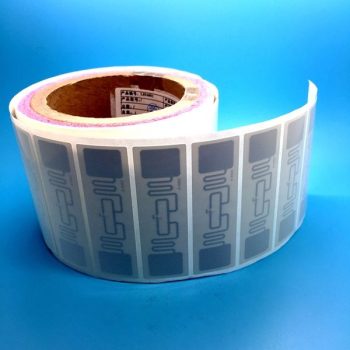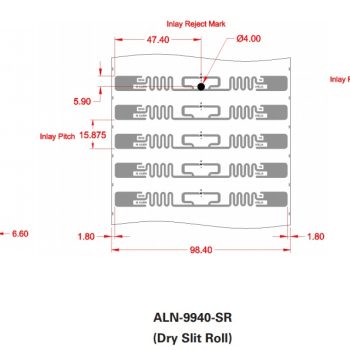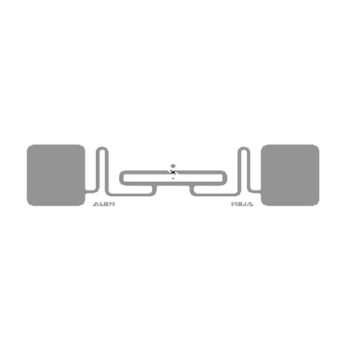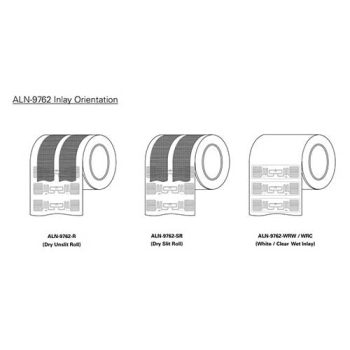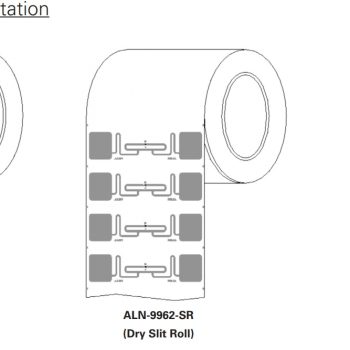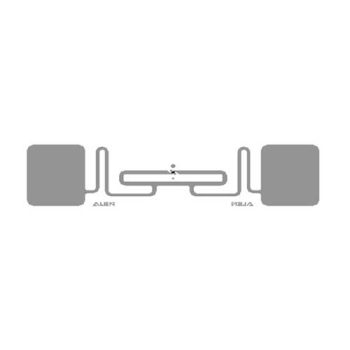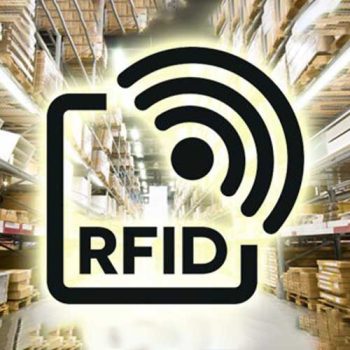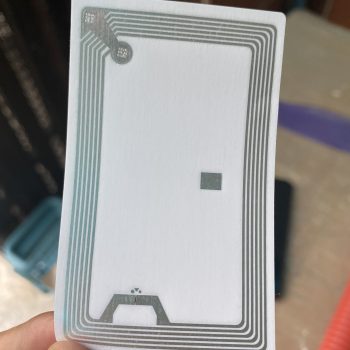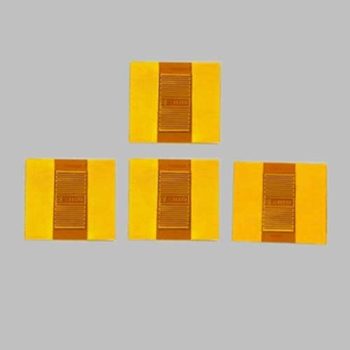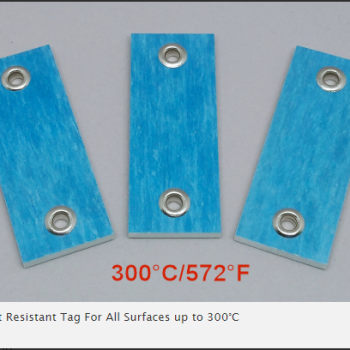1. Definition of RFID labels
- RFID labels have 3 main components:
- Inlay (antenna): Is a device into which the RFID Chip can be attached, it has the effect of receiving radio waves when transmitted to it.
- RFID Chip: is the main device that receives radio waves from the transmitter via RFID Antenna
- Label: Is a material placed on the Inlay so we can print content on the surface: QR. name of goods…
- RFID chip (abbreviation for the English term: Radio Frequency Identification):
- is a technology that uses electromagnetic fields to automatically identify and track tags that support this technology attached to objects.
- An RFID system consists of a small transponder, a receiver, and a radio transmitter.
- When triggered by an electromagnetic pulse to query data from a nearby RFID reader, the RFID tag will respond with numerical data, usually is an identifier value specific to that tag, for the RFID reader.
2.There are two types of RFID tags
- Passive tags (roughly translated: passive tags):
- is a type of tag powered by radio waves emitted from an RFID reader for data querying.
- The effective range of this type is several centimeters to several meters (M).
- Active tags (roughly translated: active tags):
- is a type that is powered by a battery
- Can be read from quite a distance with an RFID reader.
- Can be up to hundreds of meters.
3. Difference with barcode:
- label RFID does not need to be within the readable range of the RFID tag reader
- It can be mounted or embedded on objects that need to be tracked.
- Can control multiple objects equipped with RFID tags at the same time
4. RFID applications in practice
- RFID tags are widely used in industry:
- during automobile manufacturing, an RFID tag attached to a car being assembled can be used to monitor the entire process on the production line.</li >
- RFID tags attached to pharmaceuticals will aid in tracking them in the warehouse.
- and implanting RFID chips on livestock and pets supports animal identification.
- RFID tags can also be used during payment in stores
- And prevent shoplifting.
5. Other management
- Because RFID tags can be attached to general physical devices such as property, clothing, banknotes, or implanted on human or animal bodies, the possibility of being read is information regarding the owners of objects tagged with such RFID tags has raised privacy concerns.
- These concerns have led to the development of technical standards for RFID technology related to privacy and security.
- ISO/IEC 18000 and ISO/IEC 29167 use on-Chip encryption methods for anti-traceability, card and reader authentication, and over-the-air privacy. space).
- ISO/IEC 20248 specifies an electronic signature with data structure for data provision, source authentication and reading method of RFID and barcodes.
- This regulatory work is carried out by ISO/IEC JTC 1/SC 31 (ISO/IEC JTC 1/SC 31 Automatic identification and data capture techniques).
- A division of ISO, and the International Electrotechnical Commission (IEC) Joint Technical Committee (JTC).



 Tiếng Việt
Tiếng Việt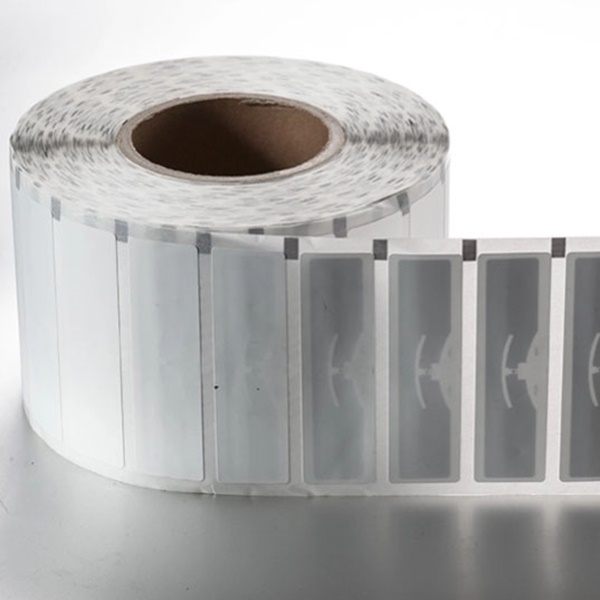
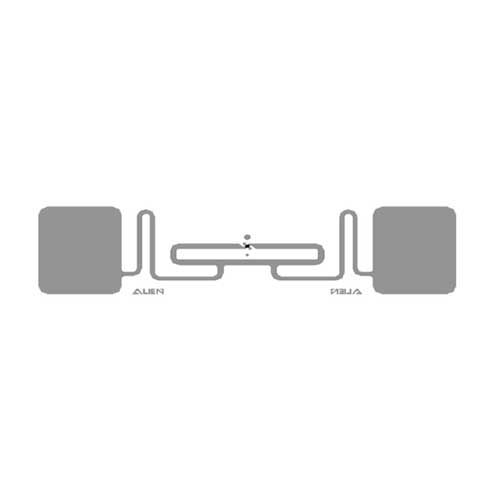

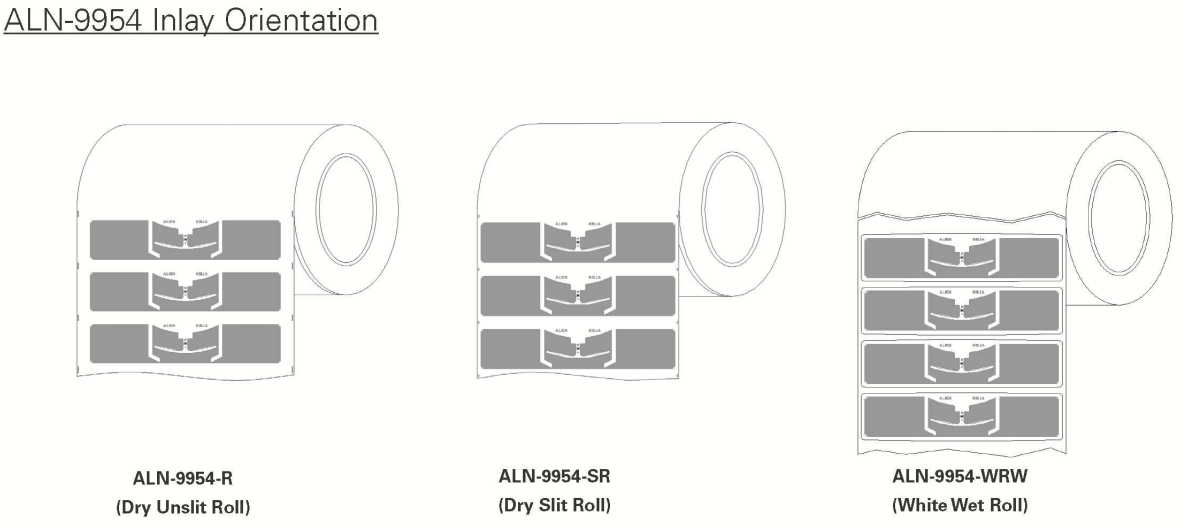
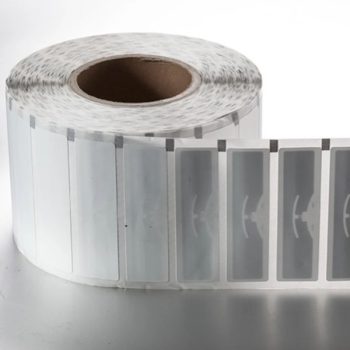
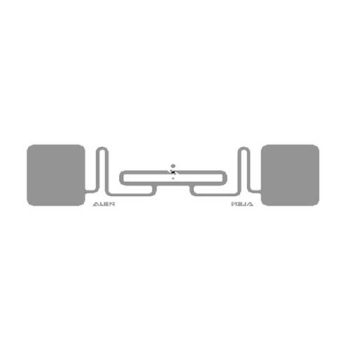
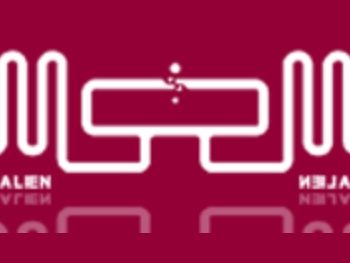
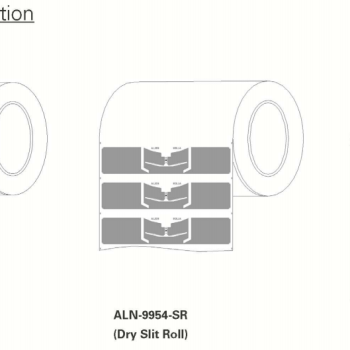

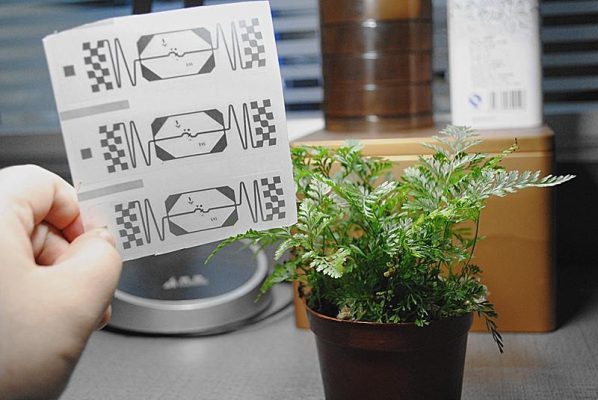
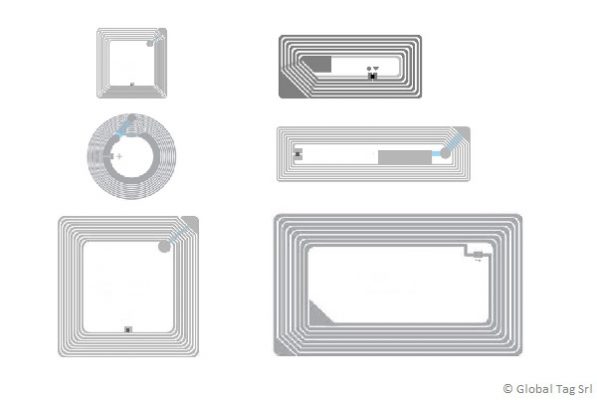

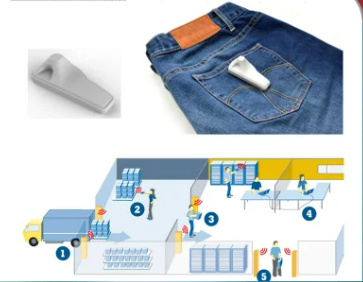
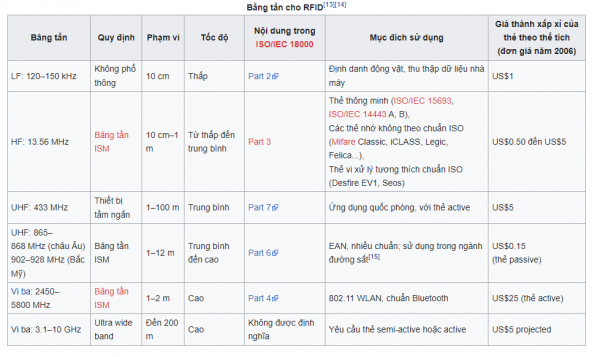 </a >
</a >